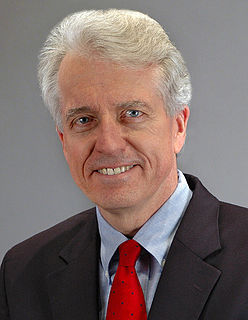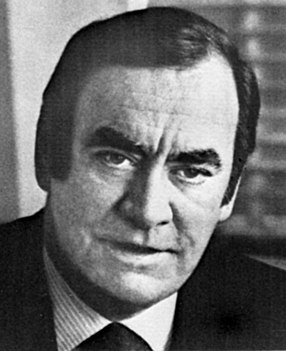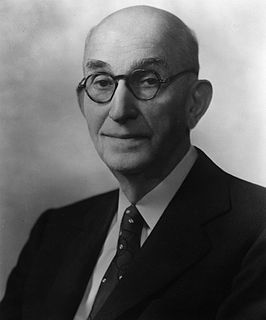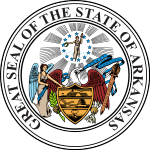
The United States Senate elections, 1978 in the middle of Democratic President Jimmy Carter's term. Thirteen seats changed hands between parties. The Democrats at first lost a net of two seats to the Republicans, and then one more in a special election. Democrats nevertheless retained a 58-41 majority.

The 1978 United States House of Representatives elections was an election for the United States House of Representatives in 1978 which occurred in the middle of President Jimmy Carter's term, when the country was going through an energy crisis and facing rapid inflation. The President's Democratic Party lost seats to the opposition Republican Party, in this case a net of 15 meaning the loss of their two-thirds majority but the Democrats still retained a rather large majority. This was the last midterm election where the Democrats managed to maintain a majority under a Democratic president.

James Charles Slattery is an American politician. He served in the U.S. House of Representatives from 1983 to 1995 representing Kansas's 2nd congressional district as a Democrat, was the Democratic nominee for governor in 1994 and was the Democratic candidate for U.S. Senator in 2008.

United States gubernatorial elections were held on November 3, 1998 in 36 states and two territories. Going into the election 24 of the seats were held by Republicans, 11 by Democrats, and one by an Independent. The elections changed the national balance of power by the loss of one Republican and the gain of one Independent, although it shifted in nine states. Democrats gained open seats in California and Iowa and defeated incumbents Fob James of Alabama and David Beasley of South Carolina, while Republicans won open seats in Colorado, Florida, Nebraska, and Nevada and the Reform Party won an open Republican governorship in Minnesota. By the end of the election, 23 seats were held by Republicans, 11 by Democrats, one by the Reform Party, and one by an Independent.

United States gubernatorial elections were held on November 7, 2000 in 11 states and two territories. The elections coincided with the presidential election.

The 1970 New York gubernatorial election was held on November 3, 1970 to elect the Governor and Lieutenant Governor of New York. Incumbent Republican Governor Nelson Rockefeller defeated the Democratic nominee, former UN Ambassador and Supreme Court Justice Arthur Goldberg by more than ten percentage points. On January 1, 1971, he was sworn in for his fourth term as governor.

The 1974 New York gubernatorial election was held on November 5, 1974 to elect the Governor and Lieutenant Governor of New York. Incumbent Republican governor Malcolm Wilson was defeated by Democratic Hugh Carey. Carey became the first Democratic Governor of New York since W. Averell Harriman left office in 1958 after suffering defeat from Nelson Rockefeller in the election that same year.

The 1974 Massachusetts gubernatorial election was held on November 5, 1974. Michael Dukakis was elected to a four-year term, from January 4, 1975 until January 4, 1979. He defeated incumbent Governor of Massachusetts Francis W. Sargent in the general election.

The 1962 Massachusetts gubernatorial election was held on November 6, 1962. Former Executive Councilor Endicott Peabody defeated incumbent Governor John A. Volpe in the general election.

The 1958 Massachusetts gubernatorial election was held on November 4, 1958. Democrat Foster Furcolo was elected Governor of Massachusetts for a second term, defeating Republican Charles Gibbons, Socialist Labor candidate Henning A. Blomen, and Prohibition candidate Guy S. Williams.

The North Carolina gubernatorial election of 1992 was held on November 3, 1992. Incumbent Governor James G. Martin was unable to run for a third consecutive term due to term limits, and his Lieutenant Governor, Jim Gardner, was chosen to replace him as the Republican nominee. Former Governor Jim Hunt decided to seek his third term as the Democratic nominee. The race became one of the nastiest and most talked about races in the country, with Hunt winning a third term easily over Gardner and Libertarian nominee Scott McLaughlin.

The North Carolina gubernatorial election of 1984 was held on November 6, 1984. Popular Democratic incumbent Jim Hunt was unable to run for another consecutive term under the North Carolina Constitution. Hunt ran instead for the U.S. Senate against Jesse Helms and lost. Popular 9th District Congressman James G. Martin ran as the Republican nominee against Democratic Attorney General Rufus L. Edmisten, who defeated Hunt's Lt. Governor, James Green, among other candidates, in a hotly contested primary.

The 1956 United States Senate election in Arizona took place on November 6, 1956. Incumbent Democratic U.S. Senator Carl Hayden ran for reelection to a sixth term, defeating Republican nominee Attorney General of Arizona Ross F. Jones in the general election.

The 1824 Ohio gubernatorial election was held on October 12, 1824. The election was a rematch of 1822, with only the top two contenders returning. Incumbent Governor Morrow and Speaker of the Senate Trimble, who also served as acting Governor in 1822, both increased their vote share, lacking any other challengers. In this election, the two candidates agreed on the major issues, including support for a public school system and the development of internal improvements.

The 1940 Arizona gubernatorial election took place on November 5, 1940. Incumbent Governor Robert Taylor Jones ran for reelection but was defeated in the Democratic primary by former Secretary of State Sidney Preston Osborn, whom Jones had previously defeated in 1938.

The 1942 Arizona gubernatorial election took place on November 3, 1942. Incumbent Governor Sidney Preston Osborn ran for reelection, and easily defeated a challenge from former Governor Robert Taylor Jones in the Democratic primary, who Osborn also defeated in 1940.

The 1944 Arizona gubernatorial election took place on November 7, 1944. Incumbent Governor Sidney Preston Osborn ran for reelection, and easily won the Democratic primary, with only token opposition as former Governor Robert Taylor Jones declined to challenge Osborn to a rematch following two losses, in 1940 and 1942.

The 1958 Arizona gubernatorial election took place on November 4, 1958. Incumbent Governor Ernest McFarland decided not to run for reelection and instead unsuccessfully challenged U.S. Senator Barry Goldwater in attempt to return to the United States Senate.

The 1964 Arizona gubernatorial election took place on November 3, 1964. Incumbent Governor Paul Fannin decided not to run for reelection to a fourth term as governor, instead deciding to successfully run for the United States Senate when incumbent U.S. Senator Barry Goldwater decided to run for President of the United States.




























